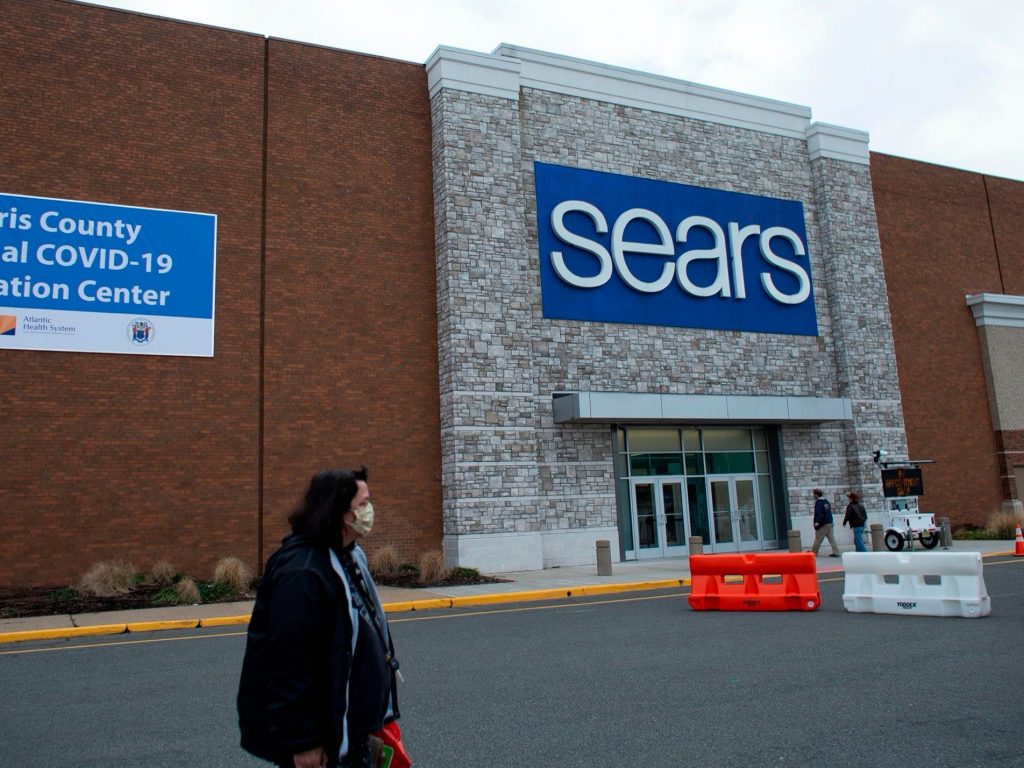
Kena Betancur / AFP
- 25 states are cutting off extra federal unemployment benefits early.
- That decision will impact about four million workers, and cause many to lose benefits completely.
- Almost every state cutting benefits is still below pre-pandemic employment.
- See more stories on Insider's business page.
Half of all states in America are ending their participation in federal unemployment benefits early, leaving millions of workers with greatly reduced benefits – or no benefits at all.
Twenty-three of these states are still below pre-pandemic employment, while 15 have lower than average vaccination rates. That means that workers being pushed back into the workplace – especially in the service industry – may find themselves exposed to more unvaccinated customers.
It also means that more workers in those states are still actively looking for, but not finding, work, indicating that those states may not actually be ready to pull the plug on increased benefits.
Even so, at least four million workers stand to see their benefits slashed or cut completely, according to an estimate from Andrew Stettner at the left-leaning Century Foundation. Overall, according to Stettner, 2.1 million workers on Pandemic Unemployment Assistance (PUA) and Pandemic Emergency Unemployment Compensation (PEUC) – both federal programs – will completely lose their benefits.
People receiving those include newly eligible gig workers, who have not traditionally been able to receive benefits, and those who have been unemployed long enough to exhaust regular state benefits.
Governors have cited higher unemployment benefits as a disincentive for workers returning, although the story may be more complex. Some workers are rethinking what they want out of work completely, while others have found their industries irrevocably altered by the pandemic's economic devastation.
All of the states moving to end their unemployment benefits are led by GOP governors. An economic research team at JP Morgan said in a note that it "looks like politics, rather than economics, is driving early decisions to end these programs."
But one reason that workers may not be returning is continued COVID safety concerns. People over 55 and those with young children have been primary drivers of the drop in the labor force, according to a research note from UBS economists led by Andrew Dubinsky.
Vaccination rates are low in many of the states cutting benefits
In states moving to end their participation in federal unemployment benefits early, the population tends to be less vaccinated. Four of the five states with vaccination rates under 40% are opting out of federal UI.
Vaccination rates are lower in the states that are cutting benefits. Using CDC data from May 27, the average rate among those cutting states is 45.95%, while the rate is 55.14% among states continuing these benefits.
The following map shows the share of adults, aged 18 and older, in each state that are fully vaccinated as of May 27. States marked with an "X" are those cutting federal unemployment benefits.
Louisiana is the only one of the five states with vaccination rates of 40% or lower not cutting benefits. Only four of the 25 states cutting federal unemployment benefits have rates of at least 55%, while 14 states not cutting benefits have rates of at least 55%.
Some states ending benefits are close to pre-pandemic employment
Almost every state is still below pre-pandemic employment, but those cutting benefits seem to be closer to employment levels seen in Feburuary 2020.
The following map shows the percent change in employment from February 2020 to April 2021. States marked with an "X" are those cutting federal unemployment benefits.
Some of the largest employment gaps are in states not cutting benefits, such as Hawaii, New York, and Nevada. Twelve states not cutting benefits are at least 7.0% below their pre-pandemic employment. Alaska has the highest percent decline among the states cutting benefits at -6.9%, followed by Florida at -5.5%.
Some states cutting benefits seem to be closer to getting back to February 2020 employment, such as Montana and South Dakota. These two states are less than 2% below pre-pandemic employment as of April 2021. Utah and Idaho, two states that are soon cutting benefits, are the only states above pre-pandemic employment at 1.2% and 1.5% respectively.
Texas has an unemployment rate above the current national rate and is 3.4% below pre-pandemic employment as of April 2021. On May 17, Gov. Greg Abbott made the announcement that benefits would end come June 26. Texas is the largest state to announce an early termination of federal unemployment benefits.
Dina Jones, 54, is one of those unemployed Texans. She lives in the Houston metropolitan area, and is currently receiving PUA. That means that, come June 26, she will lose all of her benefits.
"We're scrambling faster to try to find a job," Jones told Insider, saying she's overlooked for roles every single week. She added: "I do agree that we should all go to work and we should not be collecting from the government, but he [Abbott] dropped it so fast. People are going to be scrambling."
A report from the left-leaning Economic Policy Institute (EPI) found that "nearly all the states cutting UI still have significantly fewer jobs than before the pandemic." In Texas, for instance, nearly one million workers are "officially unemployed," meaning that they're actively looking for work but haven't had luck yet.
Jones is one of them. She said she's tired of being home all the time, and wants to work. But what stings is hearing Abbott say that that there are plenty of jobs out there, especially since they pay significantly lower than what she used to earn. She said she's still getting rejected from jobs that pay half of her prior wage.
"What are you telling me, Governor Abbott, that I'm supposed to go to be a cashier?" she said. If she has to go take one of those lower-paying jobs, "I will come home and cry every day of the rest of my life."
